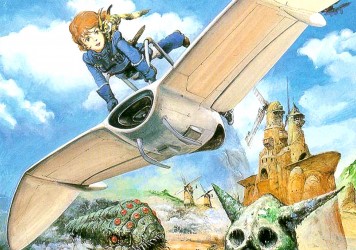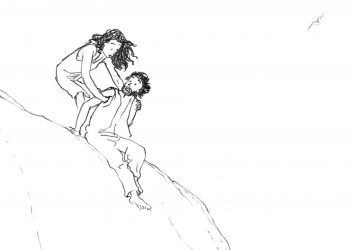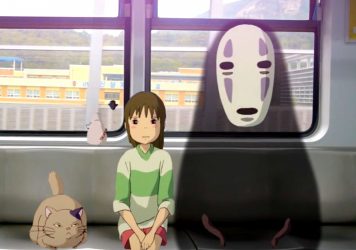There’s an ecological thread running though this delightful animated fable from Studio Ghibli.
In Michaël Dudok de Wit’s The Red Turtle, a man shipwrecked and alone on a desert island conjures for himself a companion who falls somewhere between mortal reality and imagined fantasy, and the two go on adventures together that come to define life – and death.
There must be something in the millennial waters. For the bare bones plot of de Wit’s minimalist animation (or minime) can also be discerned in recent, otherwise different, live-action films like Robert Zemeckis’ Cast Away and Dan Kwan and Daniel Scheinert’s Swiss Army Man, suggesting that here, stranded in our present age, existential ideas are afloat about the place of the individual in hostile nature and an unforgiving universe.
Faced with ecological threats, a shift from globalisation back to economic isolationism, and the atomisation of our lives in the digital age, cinema is giving us a timely reminder that the principle of ‘no man is an island’ has once again become caught in the current. The tiny insulated ecosystem in De Wit’s film is also a microcosm of 21st century human experience.
After the success of his animated shorts The Monk and the Fish and Father and Daughter, The Red Turtle is de Wit’s first feature film. It is a co-production with Studio Ghibli, and boasts Isao Takahata (Grave of the Fire Flies, The Tale of the Princess Kaguya) as its artistic producer, but nonetheless its animation is a far cry from the stylised wonderment of Ghibli’s similarly oceanic Ponyo from 2008.
For while here too a mythic magical realism will eventually wash ashore, there is also realism of a more straightforward kind, reflected in the way the animation carefully observes the subtle shifts in weather and light on the island. Despite an increasingly fable-like turn of events, an almost documentary-like naturalism pervades this film’s animated forms, all calibrated to daily rhythms and lunar cycles.
The protagonist is a man first seen both literally and metaphorically lost at sea, tempest-tossed upon overwhelming swells. He ends up on a small rocky atoll with bamboo forest, freshwater pool and beach. Initially, his sole company is a curious chorus of pet-like crabs. Our hero quickly gets the lie of the land, and determines to make his escape. Yet every bamboo raft that he fashions gets destroyed by something mysterious in the sea. As an expression of his frustration and desperate need for escape into a less lonely existence, the man commits an act of cruel violence against the titular creature, only to witness it not fade, but suffer a sea-change into something rich and strange.
With no dialogue beyond grunts and the occasional shouted ‘Hey!’, events here are orchestrated only by the sounds of the environment, Laurent Perez Del Mar’s score and by the beautiful imagery. It lends de Wit’s film an admirable back-to-basics purity (in formal terms) that matches the reduction of its protagonist to the simplest subsistence. The result is a parable of Darwinian drudgery and survivalist routines that is every so often disrupted by freak occurrences of nature. The magic of The Red Turtle ultimately comes down to the miracle of organic matter’s transformative recycling. Life always finds a way, and death is always a part of that.
Published 26 May 2017
Ghibli! Michaël Dukok de Wit! Together!!
A languorously paced, elegantly animated fable of life’s cyclicality.
One for the desert island films list.

Gorgeous original artwork spanning three decades of the iconic animation studio.

Michaël Dudok de Wit reveals how traditional animation comes to life.

See your favourite anime characters as they might appear in real-world settings.